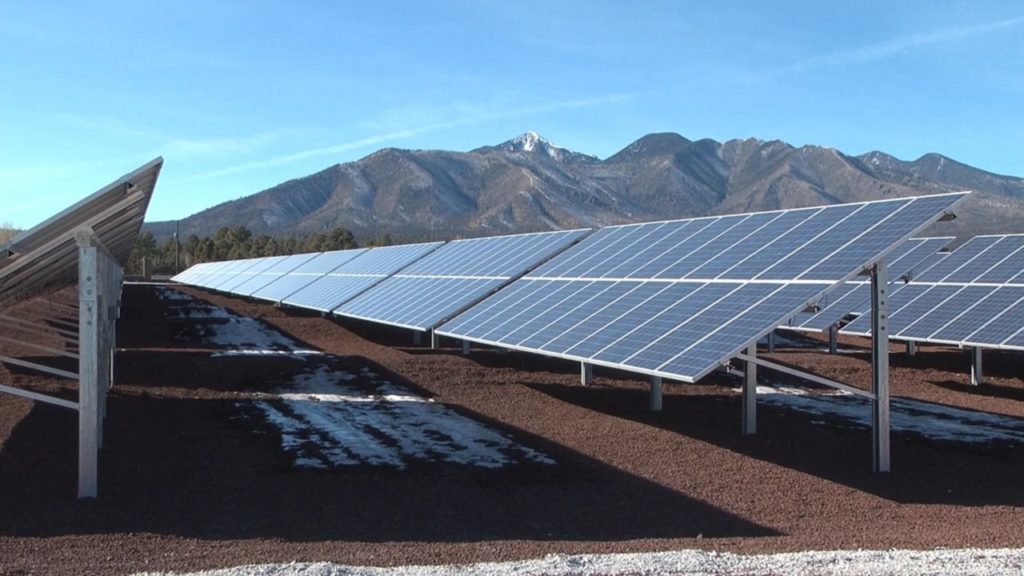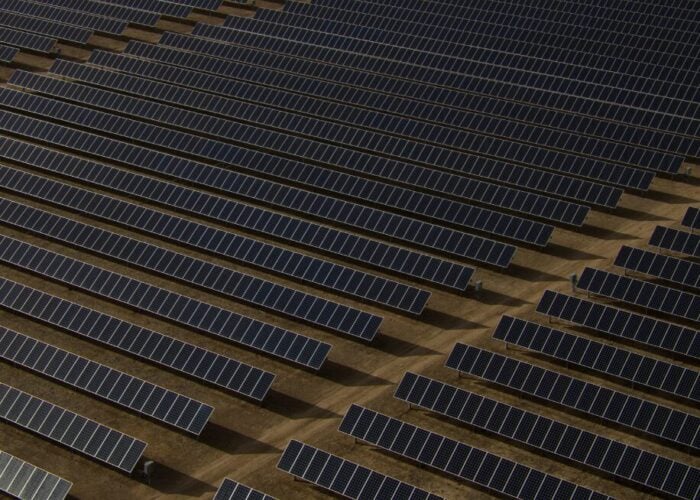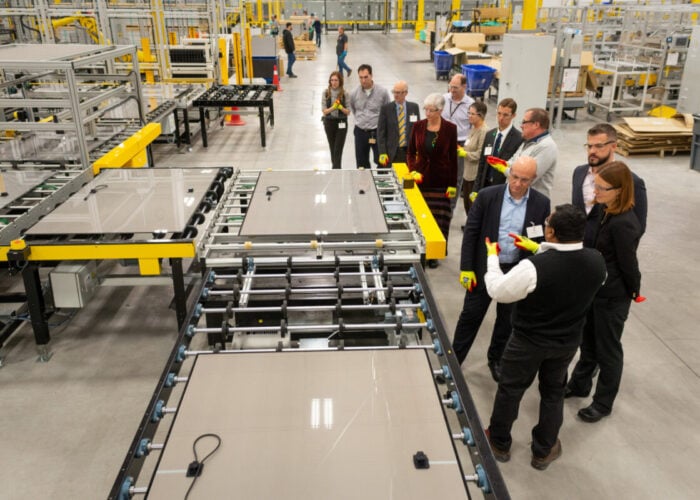
The passage of the “One Big, Beautiful Bill” could put 330,000 clean energy jobs at risk across the US, alongside threatening 331 manufacturing facilities with closure or cancellation.
These are the conclusions of the trade body the Solar Energy Industries Association (SEIA). This week, the group released state-level forecasts for how the proposed bill, which has been passed by the House of Representatives and is currently under consideration by the Senate, could impact the US renewable energy industry in general, and the solar sector in particular.
Try Premium for just $1
- Full premium access for the first month at only $1
- Converts to an annual rate after 30 days unless cancelled
- Cancel anytime during the trial period
Premium Benefits
- Expert industry analysis and interviews
- Digital access to PV Tech Power journal
- Exclusive event discounts
Or get the full Premium subscription right away
Or continue reading this article for free
SEIA notes that industry leaders California, Texas and Florida would be expected to lose the most jobs, with losses of 35,700, 34,100 and 21,800 solar and storage positions, respectively, and that some of the most severe losses would take place in states that voted for Donald Trump in last year’s election.
Both Texas and Florida voted for Trump, as did Arizona, which is set to lose 9,400 solar and storage jobs, the fifth-most in the US. Notably, Arizona was one of the states flipped by Trump following Joe Biden’s victory in the 2020 election, and is the latest piece of data to suggest that Republican states could stand to lose the most from the passage of this bill.
Earlier this year, the SEIA published figures on job losses on a national level, and found that 80% of the manufacturing facilities that would be put under threat by the passage of the bill voted Republican in the 2024 election.
SEIA’s latest figures also suggest that more manufacturing facilities could be at risk; last month, the trade body suggested 287 manufacturing facilities could face closure, a figure that has since been updated to 331. This revision follows this week’s proposal of a new Department of Energy (DOE) budget that would obliterate renewable energy funding, with the Office of Energy Efficiency and Renewable Energy (EERE) alone facing a 74% cut in funding.
The combination of job losses and a shutdown in new manufacturing facilities, a potential source of new jobs amid the energy transition, will translate to massive economic impacts for US citizens, according to SEIA. The trade body estimates that the passage of the bill would trigger the erasure of US$286 billion in local investments, and drive up the cost of energy for US consumers by US$51 billion, following the news that under the Trump administration, the US has already delayed or cancelled US$14 billion in clean energy investments.
Other potential impacts on US consumers includes bringing forward the end date of Section 25D residential energy tax credits from 2035 to 2026, an initial component of the bill that has since progressed to review by the Senate.
Meeting energy demand
The potential scrapping of new solar projects – both in manufacturing and deployment – would be a sudden change from recent trends in the US solar sector. Figures from SEIA and Wood Mackenzie found that the passage of the Inflation Reduction Act (IRA), which includes many proposals that the “One Big, Beautiful Bill” seeks to repeal or limit, had encouraged a fourfold increase in new US solar manufacturing capacity.
Indeed, figures from those same companies show that new capacity additions had seen an exponential growth in the US, particularly in the first quarter of 2025 and the fourth quarter of 2024, with the utility-scale sector seeing the greatest growth. This is shown in the graph below.
Looking ahead, the SEIA notes that, prior to the announcement of the bill, solar PV was largely considered to be a fundamental part of the US’ efforts to meet a growing energy demand.
Using figures from the Energy Information Administration’s (EIA’s) Annual Energy Outlook, SEIA notes that the US expects to have 200GW of new electricity demand by 2030; without solar and storage, the US will add just 66.6GW of new capacity, and while Trump’s latest bill will unlikely torpedo every planned solar project in the country, it is clear that the US will struggle to meet this energy demand without the capacity added by the solar industry.
Indeed, EIA figures, published prior to the announcement of the bill, forecast solar to see the largest growth in cumulative capacity between 2024 and 2030, with the solar sector set to add more than 100GW of new capacity by the end of the decade. This trend is shown in the graph below.
Crucially, the forecast growth in solar is stronger than the growth in wind power, and the marginal growth in combined cycle generation, and a sharp contrast to the declines in cumulative capacity expected in the nuclear and coal sectors. SEIA has called on senators to act to limit some of the most damaging components of this bill, to ensure solar power continues to play a role in the US’ energy future.
“Axing energy jobs means shuttered US factories, cancelled local investments and energy shortfalls nationwide,” said SEIA president and CEO Abigail Ross Hopper. “We hope that US Senators won’t let their constituents lose their livelihoods on their watch.”
Last month, Hopper spoke to PV Tech at the Intersolar Europe trade show in Munich, Germany, and described a state of “optimism” for the European solar sector, a contrast to SEIA’s general sentiment regarding the US industry.






